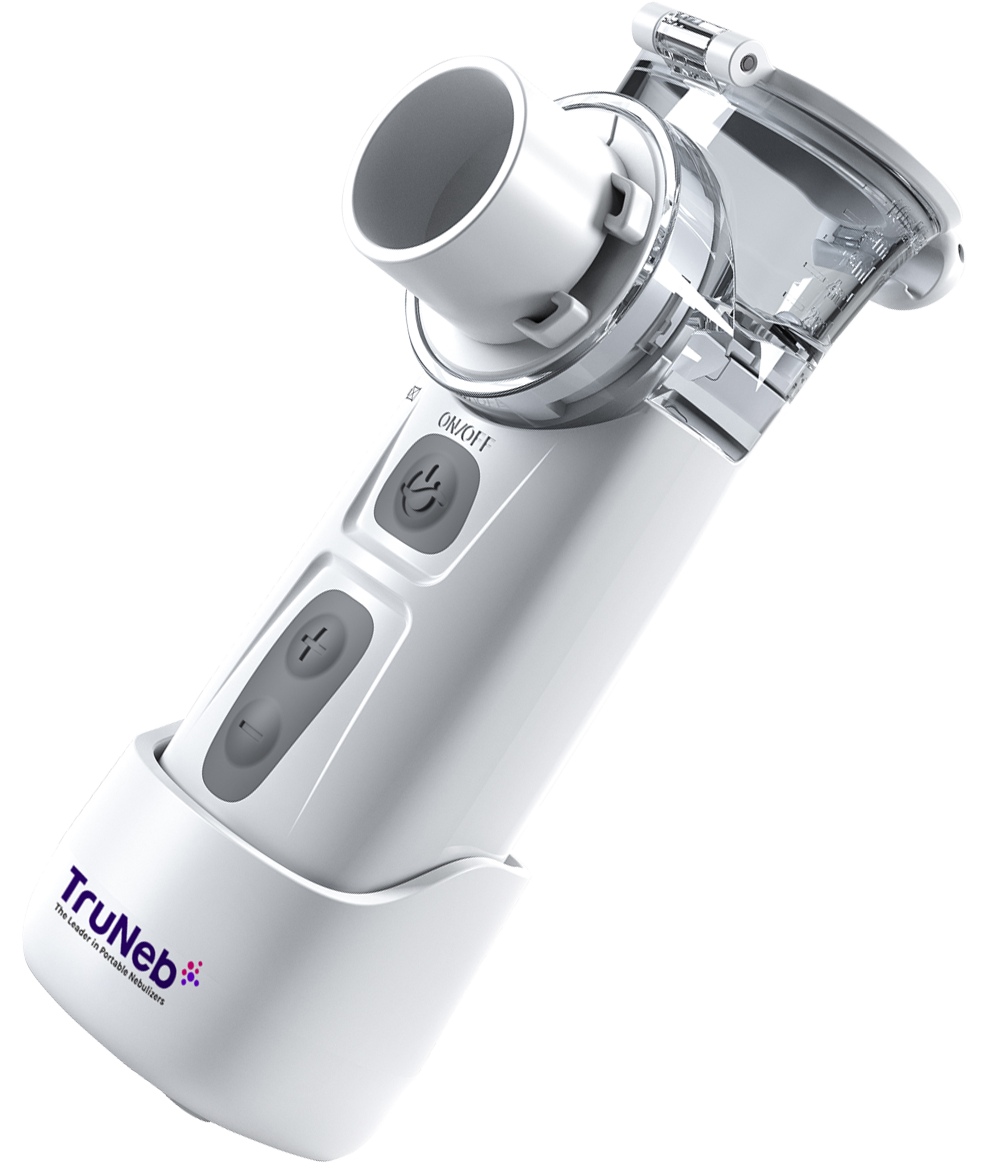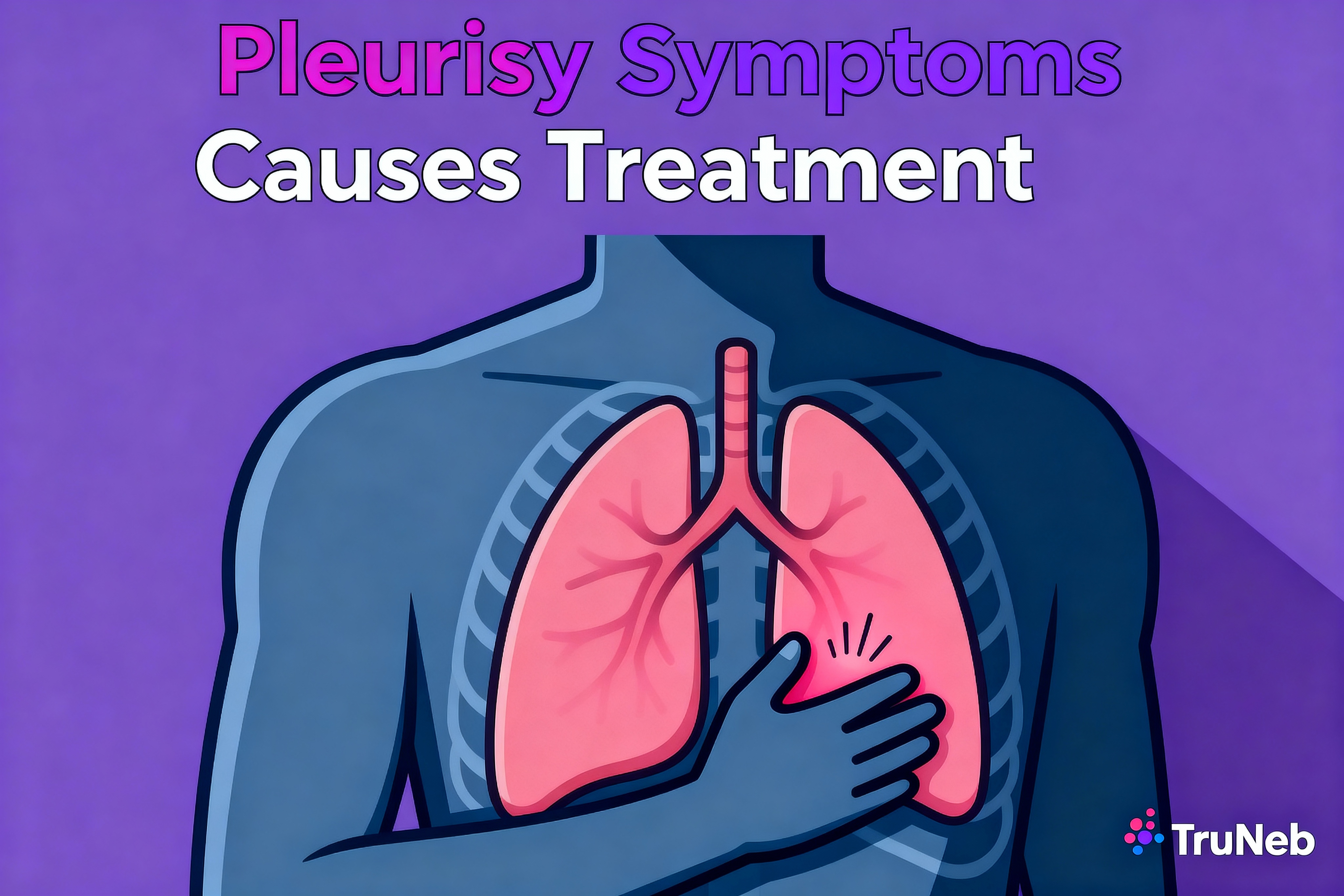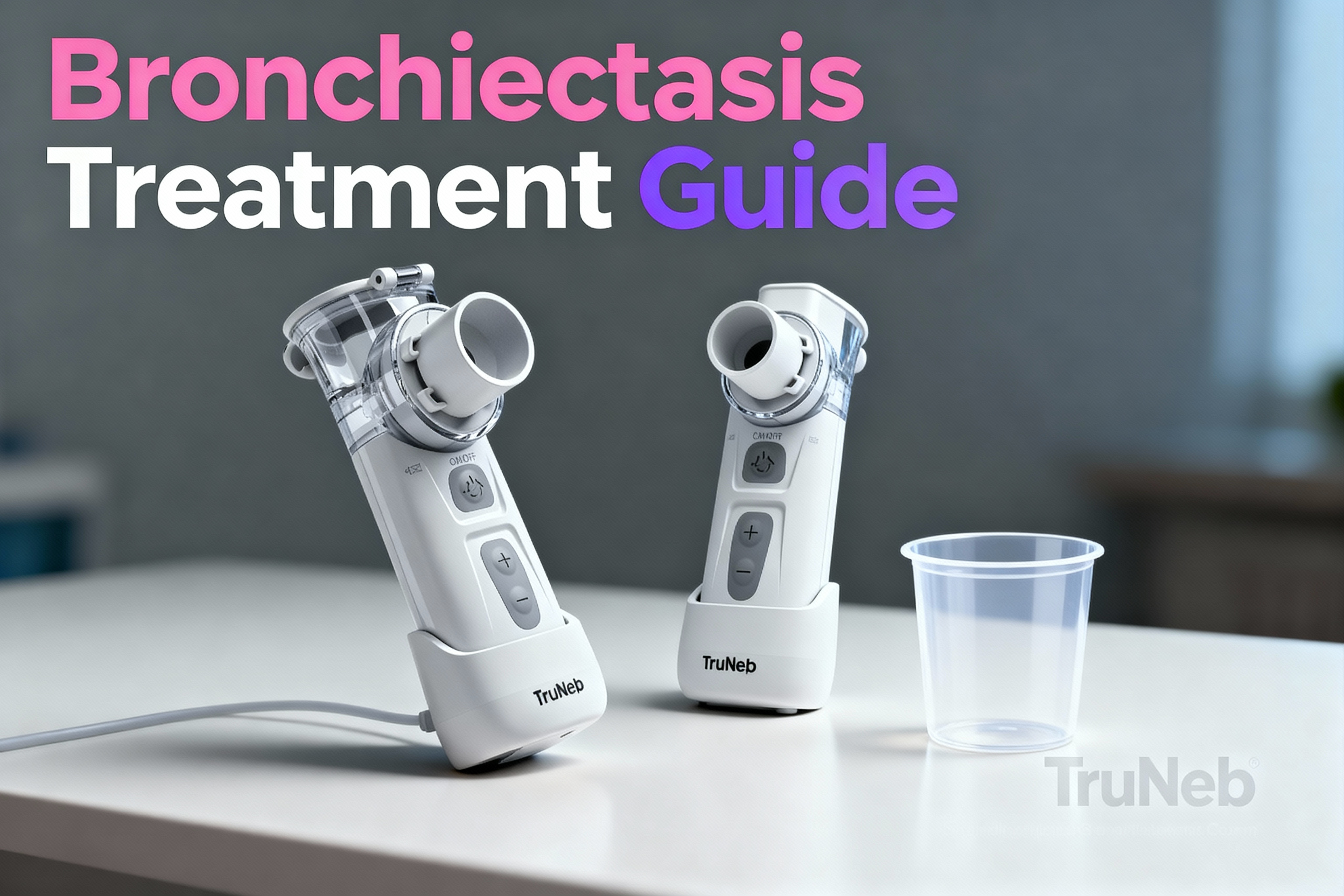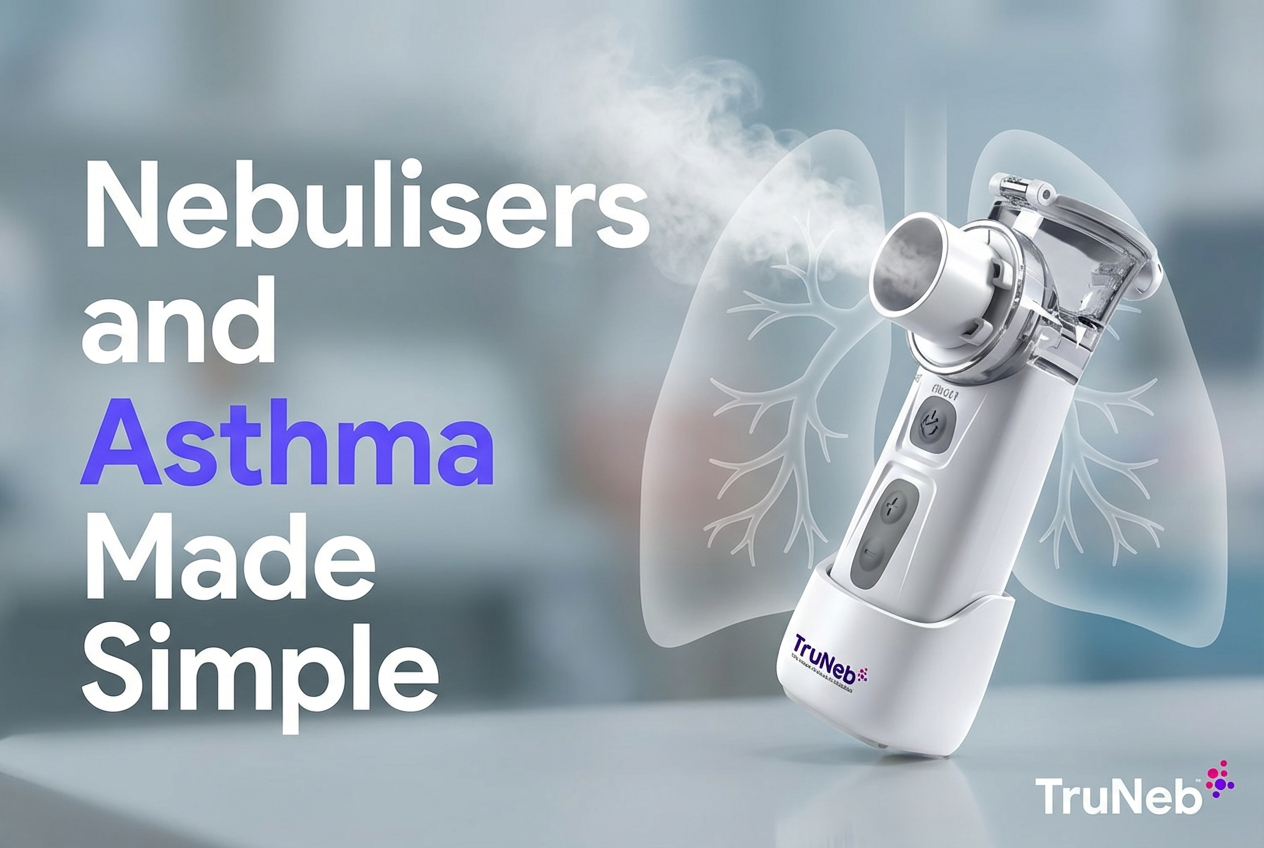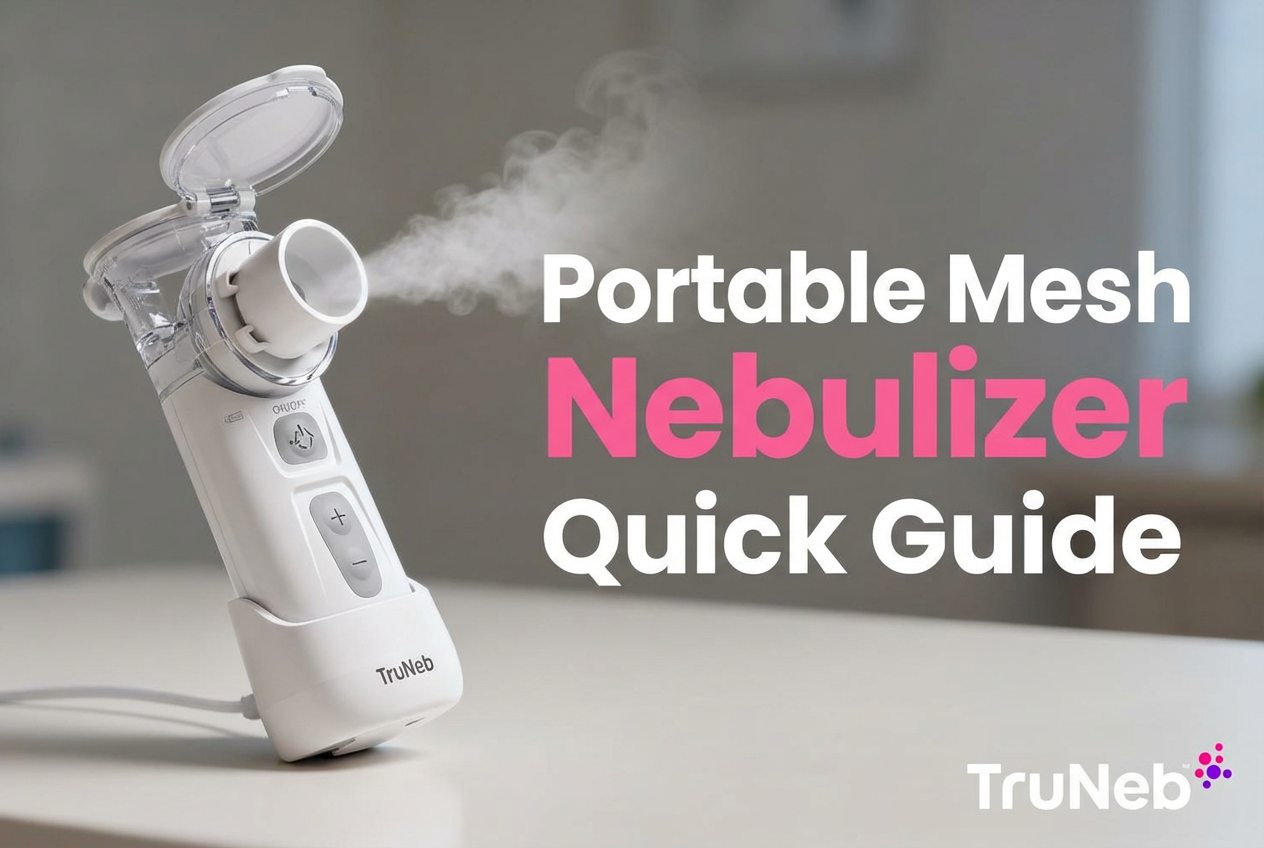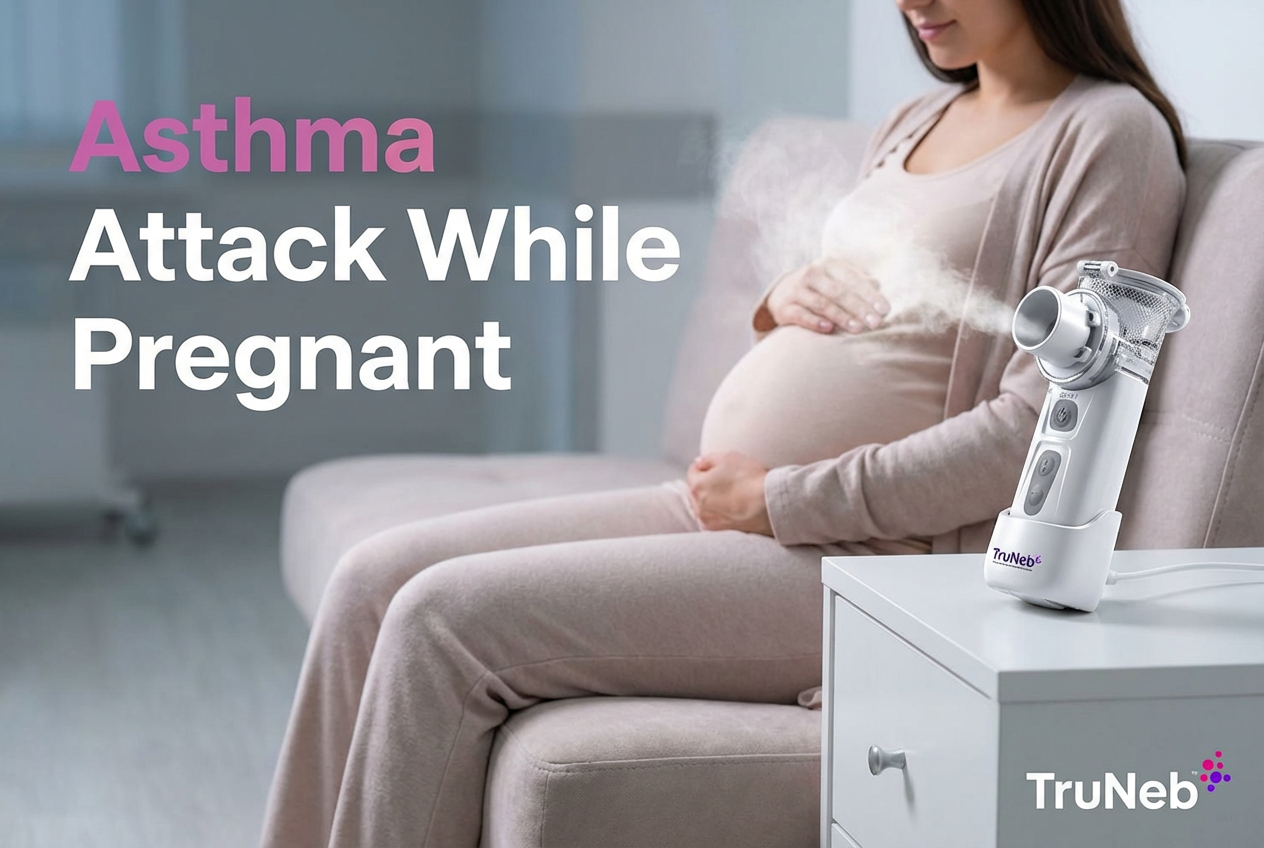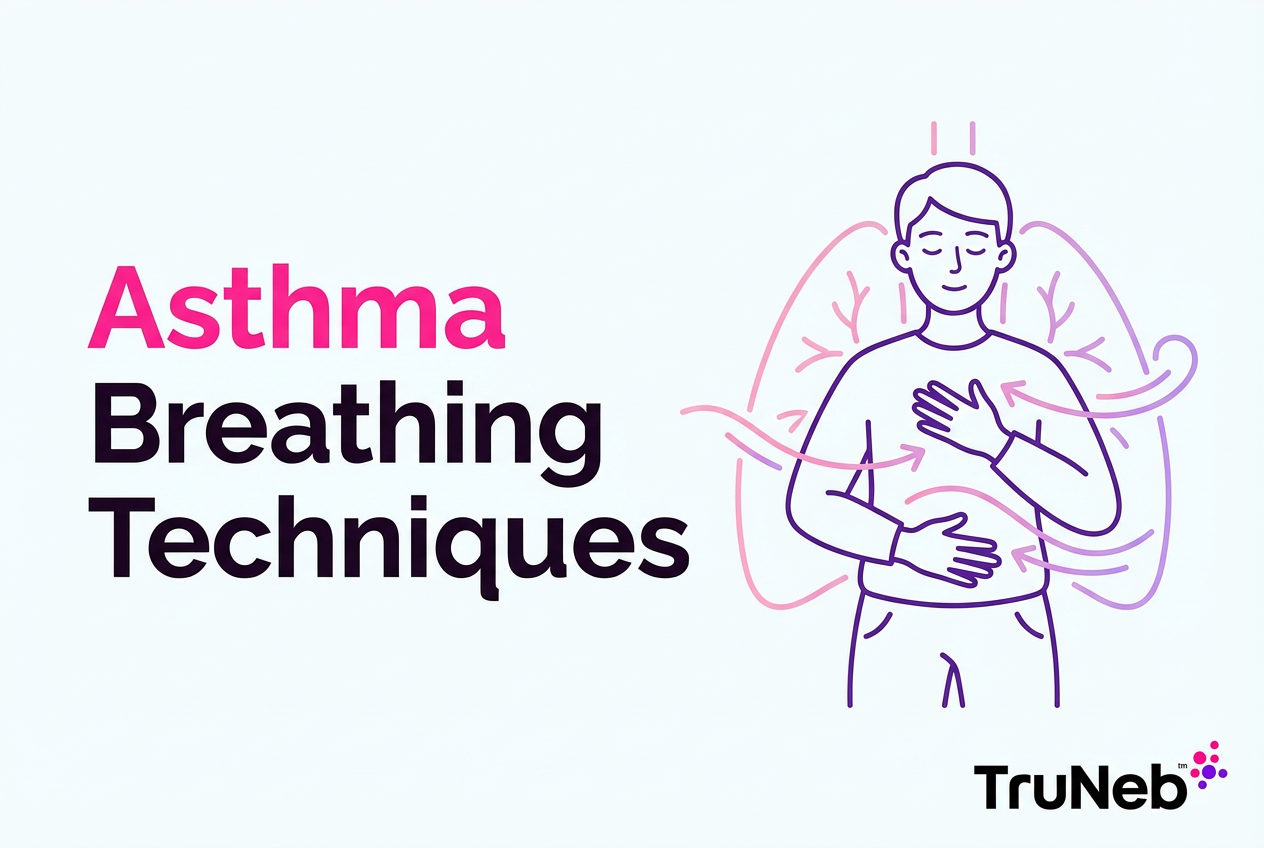On this page
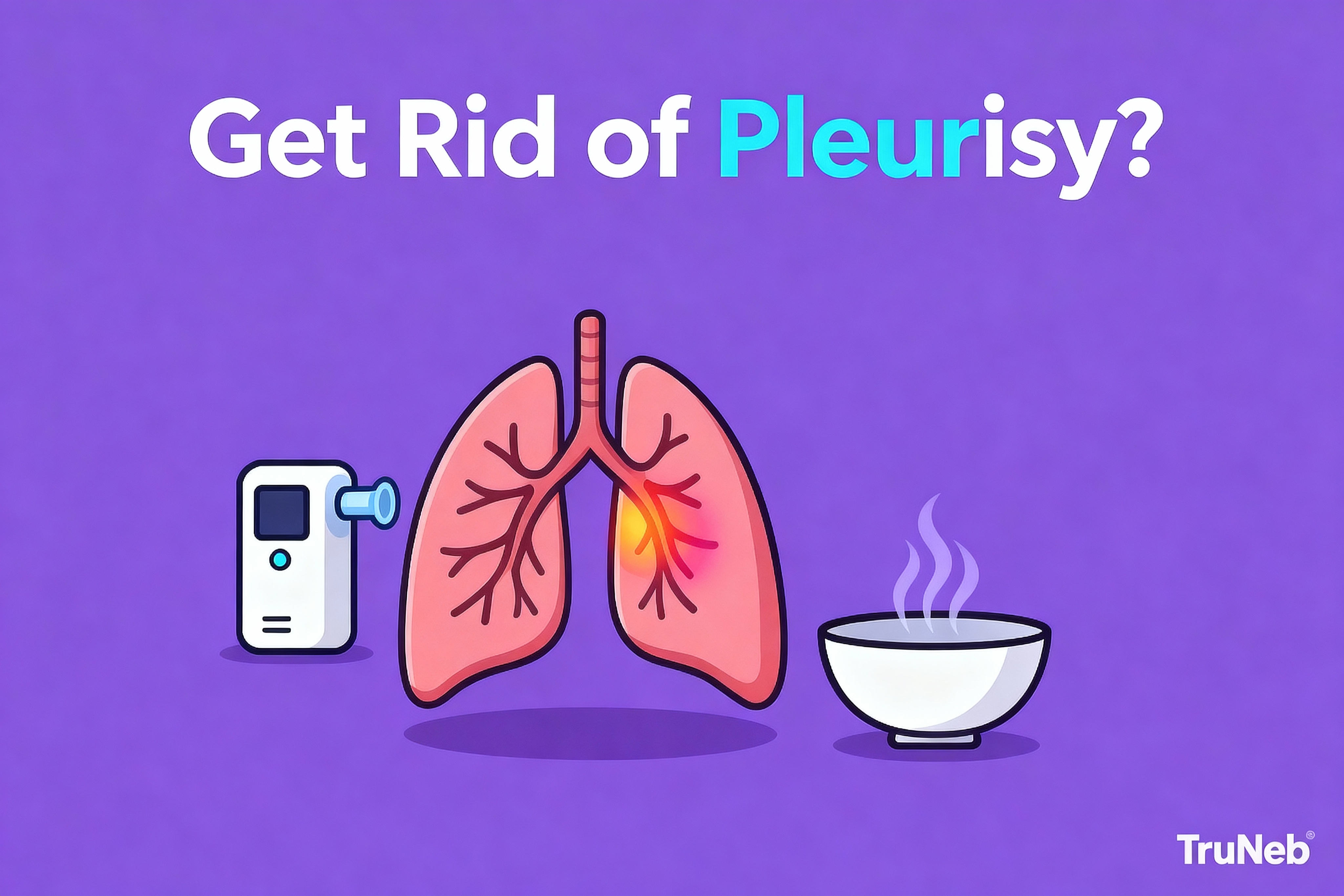
What Is Pleurisy (Pleuritis) and Why Does It Hurt?
Pleurisy means the lining around your lungs (the pleura) is inflamed. When you breathe in, those layers rub together and it can feel sharp, like sandpaper. The pain often gets worse when you take a deep breath, cough, or sneeze.
Getting rid of pleurisy means two things: treat the cause (like an infection) and calm the pain and inflammation.
Quick takeaway: Pleurisy is inflammation of the lung’s lining (pleura) that causes sharp chest pain with each breath.
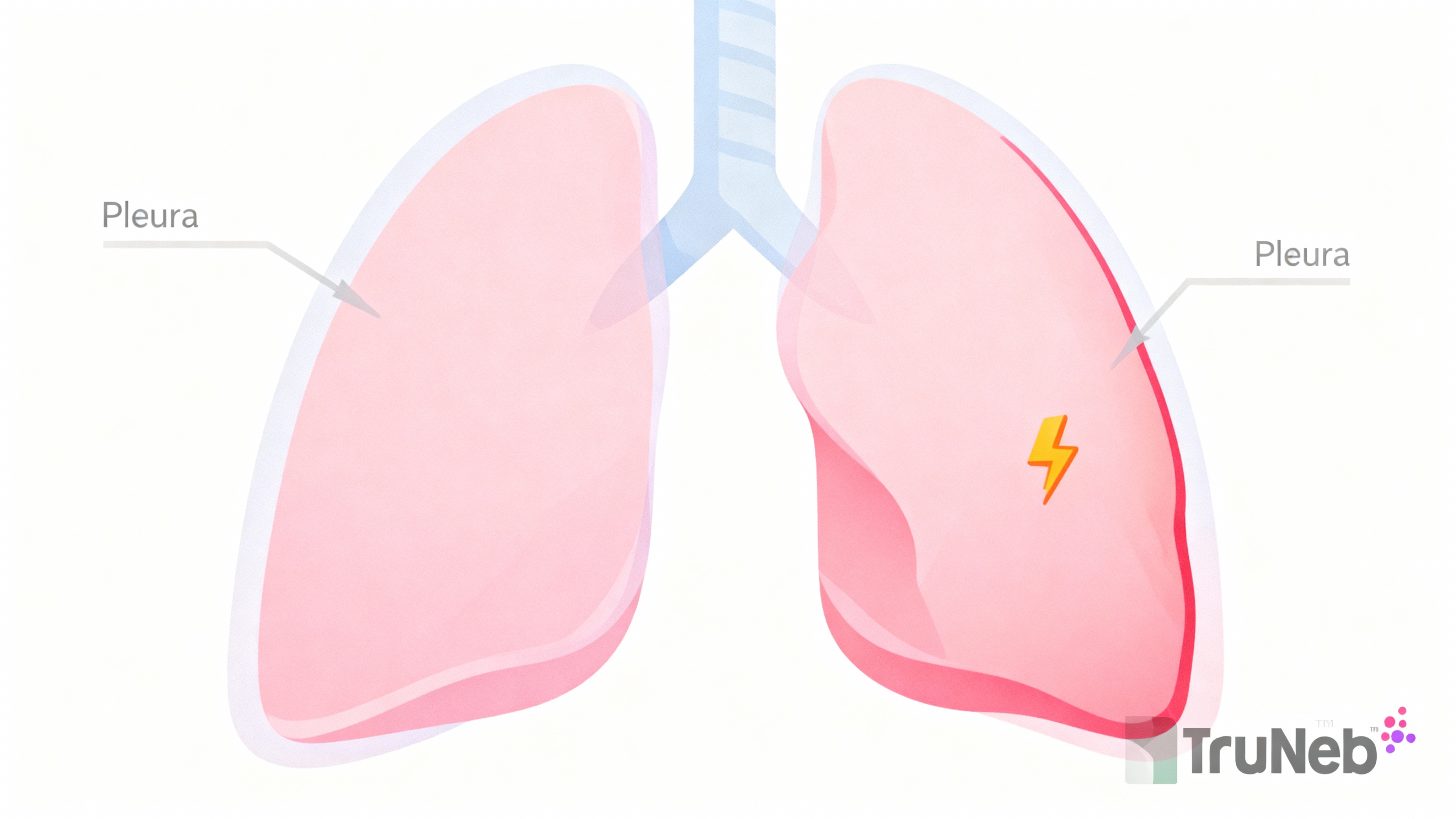
What Causes Pleurisy?
Pleurisy has many causes. Finding the cause guides treatment.
- Infections: viruses (like flu) and bacteria (like pneumonia or tuberculosis) can inflame the pleura.
- Autoimmune diseases: rheumatoid arthritis and lupus can trigger repeat pleurisy.
- Blood clots: a pulmonary embolism can cause sudden pleuritic pain.
- Chest injury or surgery: irritation after trauma or procedures.
- Cancer: lung or pleural cancers can involve the pleura.
- Sometimes no clear cause is found.
Older age, lung disease, and a smoking history can raise risk. Recent viral illnesses (including COVID-19) are also linked to pleuritic pain.
Quick takeaway: The fastest way to get rid of pleurisy is to treat its cause.
Signs and Symptoms of Pleurisy
- Sharp, stabbing chest pain that worsens with deep breaths, coughing, or sneezing.
- Pain on one side of the chest, sometimes felt in the shoulder.
- Shortness of breath because it hurts to breathe deeply.
- Cough or fever if an infection is the cause.
- If fluid builds up (pleural effusion), pain can lessen but breathing can feel heavier.
Quick takeaway: Chest pain that worsens when you breathe in is classic for pleurisy.
How Is Pleurisy Diagnosed?
A doctor will listen to your chest for a scratchy "pleural friction rub." You might need tests to check the lungs and find the cause:
- Chest X-ray to look for pneumonia or fluid.
- Ultrasound or CT scan if fluid or a clot is suspected.
- Blood tests for infection or autoimmune clues.
- Thoracentesis (drawing out pleural fluid) if there is fluid, sometimes with lab testing. A biopsy can be needed in persistent or unclear cases.
- An ECG is sometimes done to rule out heart causes of chest pain.
⚠️ Seek urgent care or call emergency services if you have crushing or spreading chest pain, sudden severe shortness of breath, fainting, coughing up blood, high fever, or symptoms that rapidly worsen.
Quick takeaway: Tests confirm the cause so treatment can be targeted.
Medical Treatments for Pleurisy
Doctors focus on two things: reduce pain/inflammation and treat the cause.
- Pain and inflammation control: anti‑inflammatory pain relievers like ibuprofen or naproxen are commonly used. Acetaminophen can help with pain. If inflammation is severe or tied to an autoimmune condition, your doctor sometimes prescribes a short steroid course.
- Treating the cause: antibiotics for bacterial pneumonia or TB therapy for tuberculosis; medicines for autoimmune conditions; blood thinners for pulmonary embolism; stopping an offending drug if that’s the trigger.
- Procedures: thoracentesis to drain fluid that’s large or uncomfortable; chest tube if there is pus (empyema); rarely, procedures like pleurodesis or surgery in complicated cases.
- Care setting: some cases improve at home; others need hospital care for oxygen, IV medicines, or procedures.
Here’s how doctors typically address common causes:
Quick takeaway: When the cause is treated, pleurisy pain usually improves.
| Cause | Typical medical approach |
|---|---|
| Viral infection (e.g., flu) | Rest and NSAIDs for pain; supportive care |
| Bacterial pneumonia | Antibiotics plus pain control; monitor for pleural effusion |
| Tuberculosis | Multi‑drug TB therapy; manage inflammation |
| Autoimmune (RA, lupus) | Steroids or immunosuppressants per specialist |
| Pulmonary embolism | Blood thinners; pain control |
| Large pleural effusion | Thoracentesis or chest tube; treat underlying cause |
Note: Treatments vary by patient and severity. Follow your clinician’s guidance.
Home Remedies and Self‑Care: Getting Rid of Pleurisy at Home
To relieve pleurisy at home, treat the cause with your doctor and use these steps for comfort and healing:
- Rest and careful positioningRest. Try lying on the painful side to splint it, or sleep propped up with extra pillows to make breathing easier.
- Pain relief with medicines or heatOver-the-counter anti‑inflammatory pain relievers (like ibuprofen or naproxen) can reduce pain and inflammation—ask your doctor if they’re right for you. A warm compress or a wrapped heating pad for short periods can soothe chest wall muscles.
- Breathing exercisesPractice slow, deep breaths throughout the day. Hug a pillow when you cough to reduce pain. If your doctor gave you an incentive spirometer, use it as directed.
- Steam and humidified airUse warm, moist air for comfort—take a steamy shower or run a humidifier (avoid burns). Note: Steam inhalers and hot showers provide warm, moist air for comfort; nebulizers deliver sterile saline or doctor‑prescribed medicines to your airways. If your doctor recommends inhalation therapy, a portable nebulizer like the TruNeb™ portable mesh nebulizer turns sterile saline into a fine mist. It doesn’t cure pleurisy, but it can ease cough and make breathing feel more comfortable while you recover. You might see boxes labeled 'steam inhaler'—these are NOT nebulizers and don’t deliver medication. Only use sterile saline or prescribed medicine in a nebulizer; don’t put essential oils or non‑sterile liquids in a nebulizer.
- Stay hydrated and nourishedSip water, warm tea, and broth. Eat balanced meals. Anti‑inflammatory foods like turmeric, ginger, garlic, fruits, and veggies can support overall recovery.
- Herbal options (with caution)Some people try turmeric or ginger tea, garlic in meals, or traditional pleurisy root tea. These can support comfort but aren’t proven cures. Use them as add‑ons, not replacements for medical care.
- Avoid smoke and irritantsDon’t smoke and avoid secondhand smoke or dusty air. Clean, moist air helps the lungs heal.
Quick takeaway: Home care eases pain and supports healing, but the cause still needs proper treatment.
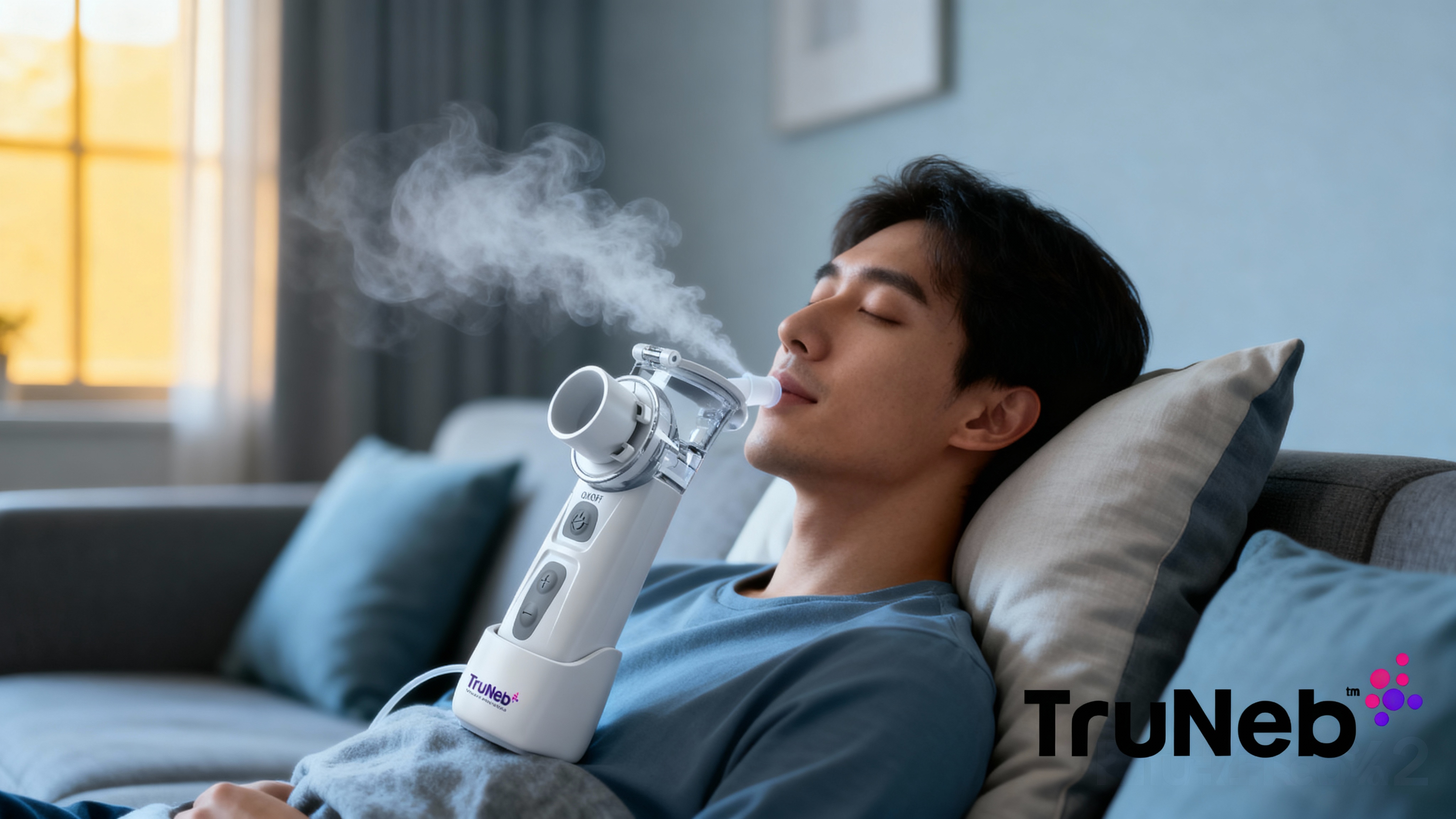
When to See a Doctor and What Recovery Looks Like
Get medical help now if you have high fever, trouble breathing at rest, worsening chest pain, coughing up blood, fainting, or any chest pain that could be heart‑related. If you aren’t improving after a few days of care, get rechecked.
With proper care, pleurisy often gets better in a few days to two weeks. Viral cases sometimes clear sooner; pneumonia‑related cases improve as the infection is treated. Pleurisy itself isn’t contagious, but the infection causing it can be. Vaccines (flu, pneumonia), quick treatment of lung infections, and not smoking can lower your risk.
Quick takeaway: Most people recover fully once the cause is treated.
Safety Note
Talk to your doctor before trying a new medication, changing a dose, or starting herbal supplements. Follow your care plan if you’re prescribed antibiotics, steroids, or other treatments. A nebulizer can help symptoms but does not replace medical care.
Frequently Asked Questions
Tap or click a question below to see the answer:
Pleurisy pain can be intense, but it’s usually treatable. The key is finding the cause, since pleurisy can come from infections, clots, or autoimmune disease. With the right treatment, most cases resolve without lasting problems.
Sometimes, yes—especially with a mild viral illness. Rest and anti-inflammatory pain relievers can help while your body heals. Still, it’s important to rule out more serious causes.
Many people improve in a few days to two weeks after treatment starts. Viral pleurisy sometimes clears faster; pneumonia-related pleurisy can take longer as the infection resolves.
No. Pleurisy itself isn’t contagious. But the infection behind it (like flu or TB) can spread, so follow your doctor’s guidance.
A doctor may hear a “pleural friction rub,” a scratchy sound when the inflamed pleura move with breathing.

